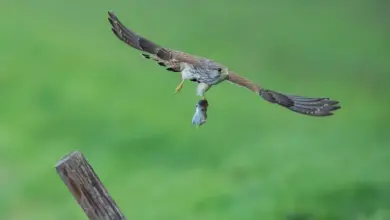The Ibiza Rails (Rallus eivissensis) is a new species of rail, described from a Late Pleistocene to Holocene cave deposit at Es Pouàs, on the island of Ibiza (Eivissa) located in the Mediterranean Sea. The Ibiza Rail was a relative of the extant Water Rail (Rallus aquaticus) and may be derived from this species, but was a bit smaller and stouter, had shorter and more robust hind limbs and shorter wings, with probably reduced flight ability. Consequently, it might have also occurred in neighboring Formentera, where no possible locations have been surveyed yet.

The extinction of this species was more recent than 16700 years BC, probably roughly between 5300 and 4350 years BC. The latter dates broadly overlap a period of the possible arrival of humans at Ibiza, suggesting a relationship between the two events. The Ibiza Rail is somewhat unusual insofar as most extinct insular rails were completely flightless, whereas the present species could still fly if it had to. However, it agrees in this respect with many species of rail still found on other continental islands worldwide, whereas most other forms were from oceanic islands.
Nonetheless, as there were no terrestrial predators on Ibiza before the arrival of humans, it is quite certain that this species would ultimately have evolved to complete flightlessness and probably rather small size, which is a trend that seems to hold for all species of rail which evolved on small islands lacking terrestrial predators.

While it may be possible that the islands provided a higher amount of freshwater habitat due to better tree cover in the past, the Ibiza Rail’s habitat was probably brackish swamps in the coastal lowland. Extinction was most probably due to overhunting by the expanding human population; as opposed to most other extinct island rails which were simply unable to escape hunters due to flightlessness, this species is more likely to have fallen victim to its small population size: Ibiza itself is not large, and available habitat was densely populated by various species of birds, which would leave little resources for a large population of any particular species. Thus, the Ibiza Rail was likely to succumb to an amount of hunting which could have been tolerated by a larger population of island rails, flightless or not.
Copyright: Wikipedia. This article is licensed under the GNU Free Documentation License. It uses material from Wikipedia.org … Additional information and photos added by Avianweb.
Please Note: The articles or images on this page are the sole property of the authors or photographers. Please contact them directly concerning any copyright or licensing questions. Thank you.



